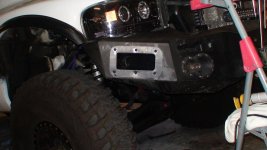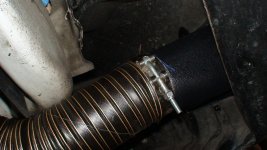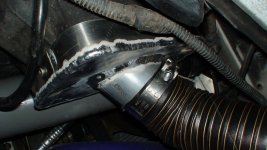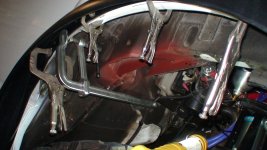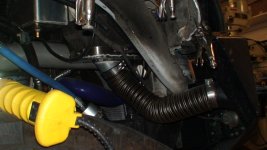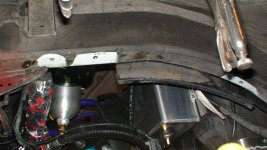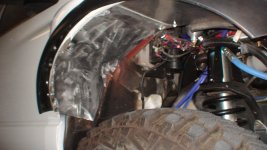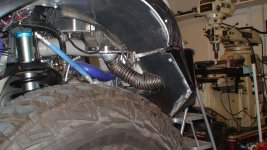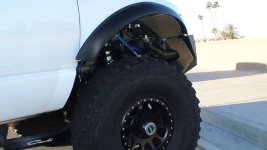You are using an out of date browser. It may not display this or other websites correctly.
You should upgrade or use an alternative browser.
You should upgrade or use an alternative browser.
Forced Air Induction
- Thread starter Chassisman
- Start date
mxhunter147
Gear Head
Not sure how this will work driving in the rain especially with a sealed air box
Chassisman
Gator Out...
going to try avoiding bad weather:badidea: Initial testing felt pretty good!
Last edited:
Chassisman
Gator Out...
I'm hoping it's just getting air from a cleaner source than the wheel well/fender liner.
RascalMafia
heyyyyyyy girrrrrrrl
Somewhat related, I remember a long time ago someone did a test on a 2002 LS1 Trans Am with the WS6 and without (keep in mind its N/A). The car had to go over 120mph for the Ram Air to add anything.
Sent from my SM-G960U using Tapatalk
Sent from my SM-G960U using Tapatalk
Chassisman
Gator Out...
more peace of mind for me I guess when driving offroad and not sucking dirty air from the engine bay or wheel wells. Also better looking/stealthy than a snorkel
RacinDuallie
Black Sheep Racing
I am on the fence on this one. :thankyou2:
Chassisman
Gator Out...
Somewhat related, I remember a long time ago someone did a test on a 2002 LS1 Trans Am with the WS6 and without (keep in mind its N/A). The car had to go over 120mph for the Ram Air to add anything.
Sent from my SM-G960U using Tapatalk
In that experiment they Probably just used a tube of some sort mounted behind the grill or in a headlight recess. I've seen some still do it that way with PVC pipe, but isn't very effective like you said... The duct that I used is 8 in across, then tapers down to 3in so it's gathering a lot more air and force feeding it.:ft:
RascalMafia
heyyyyyyy girrrrrrrl
Factory optioned WS6 vs the regular Trans Am. In order for ram air to be effective (at least for N/A gas) it has to be a completely sealed system, which it looks like yours is.In that experiment they Probably just used a tube of some sort mounted behind the grill or in a headlight recess. I've seen some still do it that way with PVC pipe, but isn't very effective like you said... The duct that I used is 8 in across, then tapers down to 3in so it's gathering a lot more air and force feeding it.:ft:
Sent from my SM-G960U using Tapatalk
RacinDuallie
Black Sheep Racing
What's the gain sucking through 3" tube?
Chassisman
Gator Out...
What's the gain sucking through 3" tube?
Probably nothing... But, I won't be sucking dirty air and dust an engine.
RacinDuallie
Black Sheep Racing
Is going down in size gonna restrict the incoming air?
Chassisman
Gator Out...
It probably would if I didn't have a second larger hole in the air box. This will have to do until I can make some sheet metal fender liners. It sure is a lot easier to work on without them though!
Chassisman
Gator Out...
more peace of mind for me I guess when driving offroad and not sucking dirty air from the engine bay or wheel wells. Also better looking/stealthy than a snorkel
Probably nothing... But, I won't be sucking dirty air and dust an engine.
Nice work but your engine shouldn't suck dirty air or dust if you have an effective air filter. At off road speeds you certainly won't benefit from any ram-air effect.
And it will be critical that you do avoid bad weather, because it won't be the rain, you'll have a problem with. It will be tire splash when you go try puddles and possible submersion if you have to drive thru deep water. If either should happen, you'll hydrolock the engine.
Honestly, the wheel well, fender area is a cleaner and drier place to draw air from. So long as you have a quality filter, any dust that blows into the engine compartment, will not get into the engine.
Ed
smokinVE
$$+VE=NO HP
The Straight Scoop: Exploring the Science Behind Hood Scoop Design - OnAllCylinders
0.0000176 x air speed in mph² = ram pressure increase in pounds per square inch (psi).
“If you plug in the numbers, you’ll find an increase in inlet air pressure of .142 psi at 90 miles-per-hour. Standard atmospheric pressure is 14.7 psi, so this represents an increase of just under 1 percent. If the air/fuel ratio is adjusted to compensate for the increased pressure, there should be a corresponding 1-percent increase in horsepower. For a 1,200-horsepower Pro Stock engine, that’s a gain of 12 horsepower. Hood scoop pressurization increases dramatically at faster speeds: It’s 2 percent at approximately 130 miles-per-hour, and 3 percent at 158 miles-per-hour. At the magical 200 mile-per-hour mark, the theoretical pressure increase is .704 psi, or 4.8 percent. That equals 56 “free” horsepower.”
I think you should add a lamp shade to your bumper OP!!!
0.0000176 x air speed in mph² = ram pressure increase in pounds per square inch (psi).
“If you plug in the numbers, you’ll find an increase in inlet air pressure of .142 psi at 90 miles-per-hour. Standard atmospheric pressure is 14.7 psi, so this represents an increase of just under 1 percent. If the air/fuel ratio is adjusted to compensate for the increased pressure, there should be a corresponding 1-percent increase in horsepower. For a 1,200-horsepower Pro Stock engine, that’s a gain of 12 horsepower. Hood scoop pressurization increases dramatically at faster speeds: It’s 2 percent at approximately 130 miles-per-hour, and 3 percent at 158 miles-per-hour. At the magical 200 mile-per-hour mark, the theoretical pressure increase is .704 psi, or 4.8 percent. That equals 56 “free” horsepower.”
I think you should add a lamp shade to your bumper OP!!!
blackmega3500
New member
Damn!
Ive been looking everywhere for my laundry vent hose!
Found it!
In theory, you'll get better flow from.....

Ive been looking everywhere for my laundry vent hose!
Found it!
In theory, you'll get better flow from.....

RascalMafia
heyyyyyyy girrrrrrrl
^ that info is similar to what I was referring to earlier. Thanks for sharing that. It also doesnt take into account aerodynamic drag from the added scoops (thinking drag cars, not trucks) and whether or not the 1-2% in hp would overcome the increase in drag.
Last edited:

